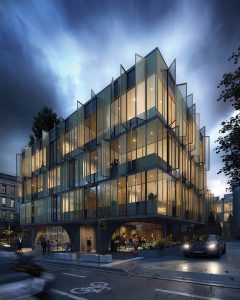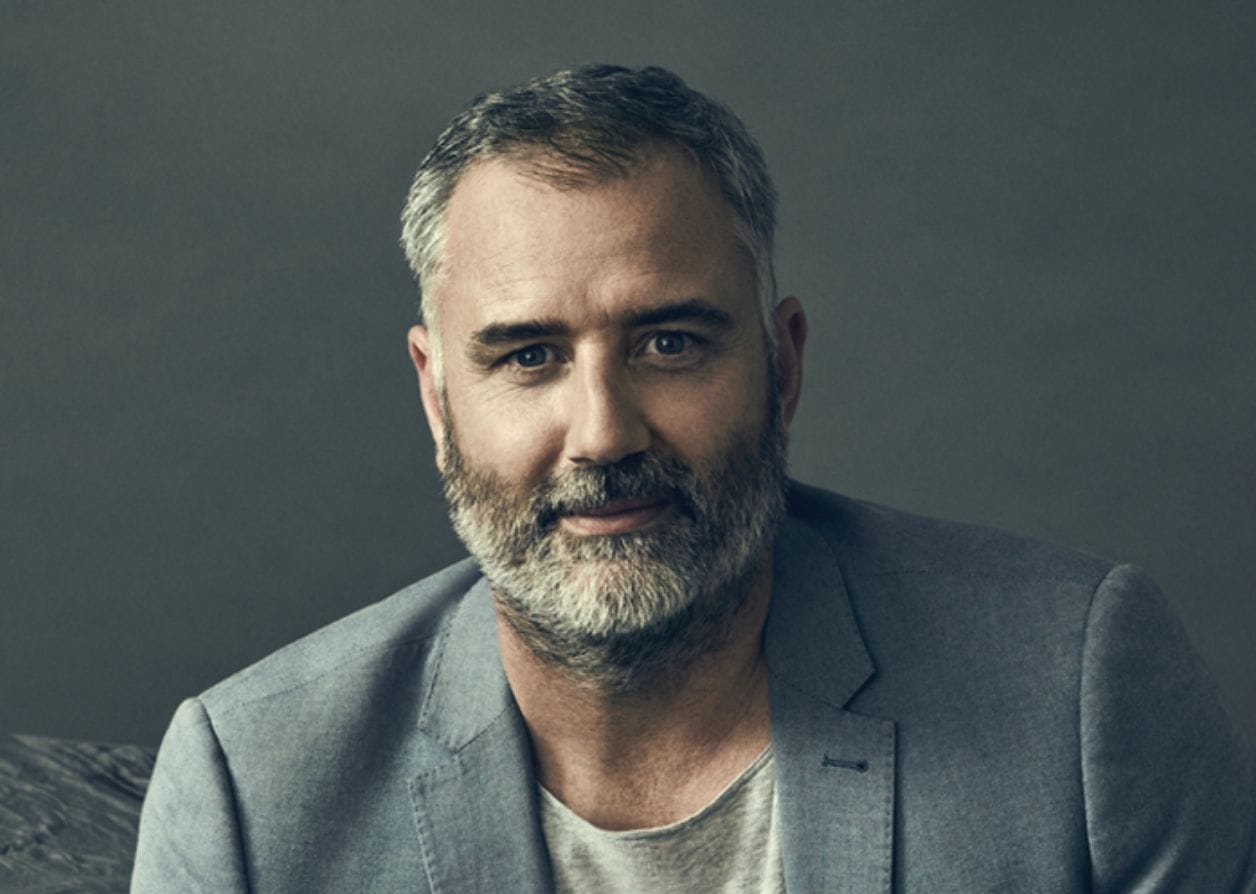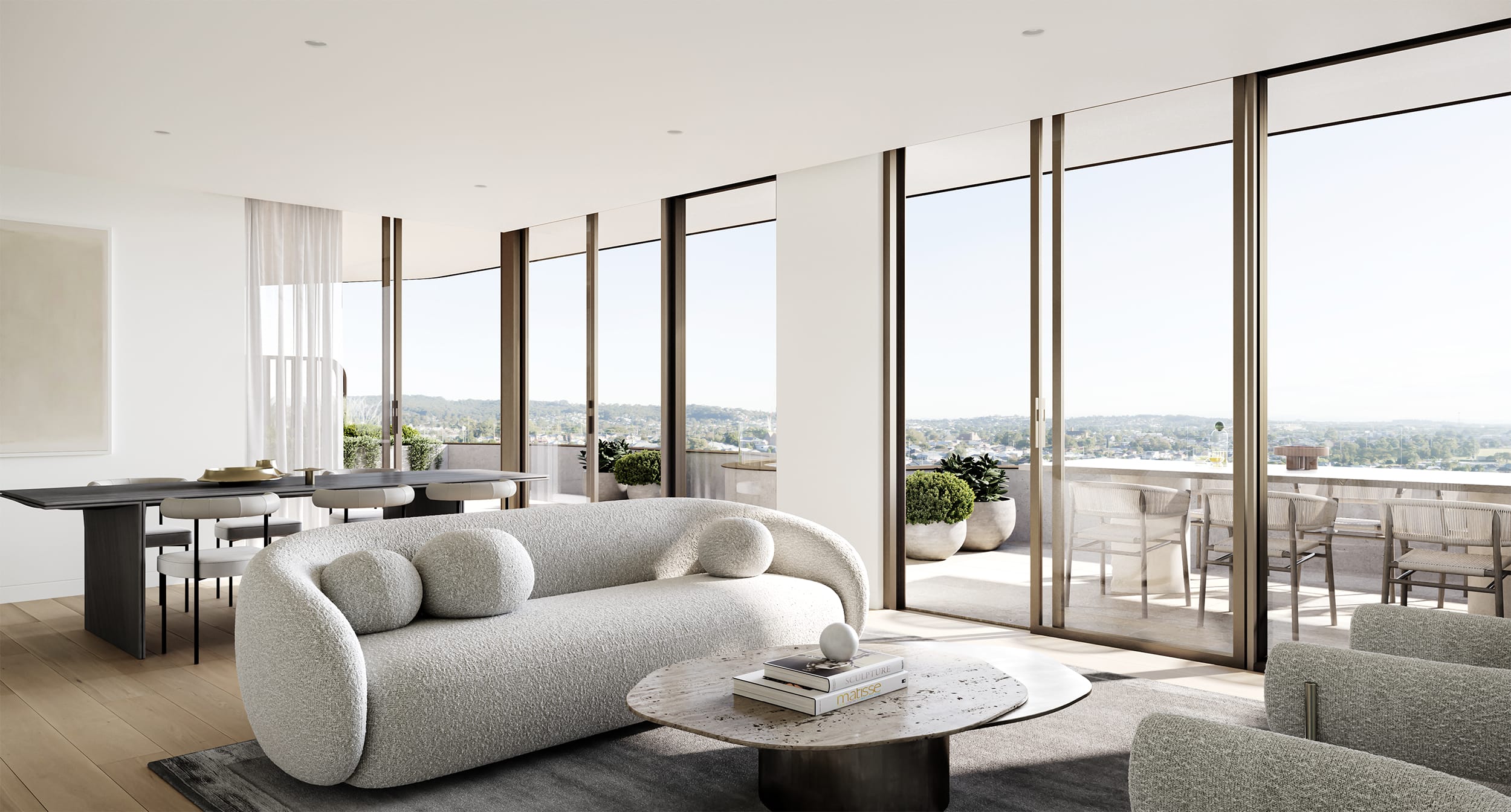Where others might have sought some measure of retribution, Berry promptly commissioned a feature wall artwork for Thirdi’s very ecclectic and uber-creative North Sydney offices.
This story seems to typify an approach that is as unorthodox as it is calculated; one that is reinforced time and again, from riding segways in the office to a Maserati virtually parked in a luxury living room. From a distance it can all seem a little random – but get sales and marketing director, Luke Berry, talking about lead generation, analytics and cost per acquisition and an abundance of ‘method’ is revealed in the madness.
Walking into our studio with a genuinely infectious enthusiasm and an equally energetic entourage, Mr Berry coolly engages with his team, who are actively closing sales and preparing the next P.R. and social posts while photographer, assistants and stylists jockey around him.
This energy and creativity is definitively Thirdi and manifests in some truly remarkable projects, such as The Gentry of Alexandria which sold 75% of the development on launch at record prices.
Berry is a consumate marketer, adept at identifying the gaps, then harnessing the power of outstanding product, creative marketing, brand partnerships and real time data to capitalise on opportunities and adapt quickly to market signals.
“Between the Paragon of Pyrmont,
Waterloo’s iconic and the gentry of Alexandria,
Thirdi group is leading the charge in Sydney’s inner city rebirth.”
Identifying the gap
With sights firmly focused on what has become known as ‘the missing middle’, Thirdi Group has set about attending to the shortage of luxurious, oversize-floorplan offering in Sydney’s inner city suburbs.
As Berry himself recently noted, within the Sydney metro area, the prestige penthouse market has been well accounted for, and the cookie cutter ‘shoebox’ market has become a race to the bottom, with an abundance of lower quality product hitting the market over the last few years in a frenzy to supply eager investors and first home buyers.
Cashed up owner-occupiers looking for a luxury lifestyle in and around the city-bowl, however, are hard-pressed to find an off the plan offering delivering high-end, spacious apartments or townhouses: Enter Thirdi Group.

It’s the product, Stupid
The catch cry amongst respected developers at the moment seems to be that distinctive quality product will sell, and cookie-cutter stock will sit. At Thirdi the sentiment is no different.
With each project, the innovation and creativity dial seems to ratchet up, delivering The Gentry’s torrens title terraces, housed in a heritage facade, and ultimately the Paragon’s luxurious 5-level terrace townhouses, with 5.5m high entrance hall and internal lift.
Outstanding product is the result of outstanding relationships
According to Berry, “any development is the sum of all of its parts, and each supplier brings a little of their own DNA to any particular project.”
Thirdi have forged a strong design understanding with famed architecture firm SJB, appointing them to all four of these inner city projects, with the results evident in the strking geometry of The Paragon, as well as the sensitivity with which the heritage facades of the Gentry and Iconic are expanded upon – marrying modern residential design with original industrial brickwork.
The artistic flare of interiors powerhouse Coco Republic are a regular feature, and their developments are underpinned by builders the likes of Hamilton Marino.
Their relationships with admired brand partners drives engagement and ultimately sales – and has done so with much success across all of their recent projects, even offering Tesla home battery packs as standard in certain apartments.
Their choice of partner brands is a tactical exercise, positioning Thirdi and its developments alongside innovators and prestige brands, the likes of Tesla, Maserati and Coco Republic, as well as prolific artists, such as GIlli & Marc and Dina Broadhurst.

Creativity and analytics go hand in hand when it comes to markting projects
With most of their activity being digital, data is analysed on a regular basis, in order to establish which messages and media platforms are proving most effective.
As a rule of thumb, Berry allocates 1.2% of gross realisation to sales and marketing. The team has a strong handle on cost per acquisition, with a lead costing around $220 to generate, with varied conversion results depending on project location, audience and price range.
On their signficant Newcastle projects for example, a sale generally requires 40 leads on average, amounting to about $8,800 per conversion, whereas Sydney’s $3m-$4m residences require in the region of 100 leads to secure a sale, making for a grand total of around $22,000 in media cost per conversion.
“Digital is outperforming print across all of our projects, with 68% of recent quality leads in Newcastle generated through digital media with social being the star performer, in the form of Instagram, Wechat, Facebook and LinkedIn.”
With these kinds of benchmark figures on hand, Berry takes his media partners to task on any underperforming campaigns, monitoring print enquiry and staying on top of the large online portals when their lead numbers don’t stack up.
Agreed targets are taken seriously and securing additional content in the form of advertising and editorial when media partners fall short is important to protect the signicant media dollar investment.

Move with the market
A hypersensitivity to the market and buyer feedback is a remarkable capability, and the Thirdi team react in real time as information or learnings are acquired. Even the product itself can be modified mid-campaign in response to feedback.
“When the first phase of the Mount Street Residences campaign (part of The Paragon development) ran out of steam, we redesigned the last 6 three bedroom residences. To meet demand for an ultra-exclusive product we changed the design to offer 4 incredible five bedroom terraces.”
This kind of agility in responding to the market is a rarity, and accounts for a great deal of the company’s ability to stand out amongst the cookie cutter landscape by reconfiguring product to meet variations in demand.
Opportunities and threats in 2018 through the eyes of Luke Berry
A year of normalising lies ahead (as opposed to ‘softening’). “Developers should expect to grind it out” he says.
“For us, ‘at risk’ projects present a once in a cycle opportunity to acquire interests (or indeed entire development sites) to help less experienced or foreign developers navigate through a softer market towards exit or completion.
It’s a pleasing indication to me of the strength of our business, when we have banks ringing to ask us to help out.”“For a company in our position, with a strong track record and banking relationships, this point in the market cycle offers perhaps more opportunity than any other.”
“Generally speaking, Sydney is cheap on an international level – bluechip poperty is underpriced. We need 27,000 homes per year and at full capacity, only 15,000 are deliverable, thanks in a large part to our arduous approvals process.
We will continue to see a demand-driven market for some time to come, although in the short term developers must account for bumps along the way.”




